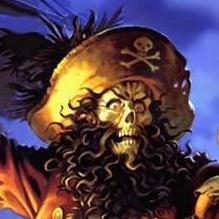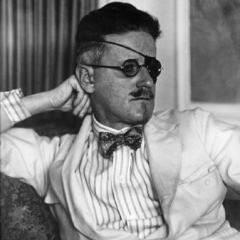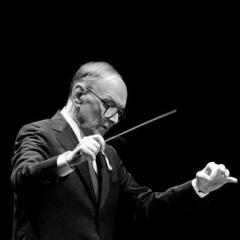Search the Community
Showing results for tags 'War Horse'.
-
War Horse<br> A Complete Score Analysis<br> by Jason LeBlanc<br><br> Complete Cue List<br> Note: All cue titles not taken from the OST or FYC Promo are completely made up by me. I have no idea what the official titles are.<br><br> <table> <tr><td>1</td><td>Dartmoor</td><td>3:52</td><td>Unreleased (0:08) / OST 01 [0:00-1:05] / Unreleased (0:08) / [1:05-2:06] / Unreleased (0:08) / [2:06-end]</td></tr> <tr bgcolor="ivory"><td>2</td><td>To The Auction</td><td>1:58</td><td>Unreleased (0:21) / OST 02 [1:56-end]</td></tr> <tr><td>3</td><td>The Auction</td><td>2:21</td><td>OST 02 [0:00-0:43] / Unreleased (0:05) / [0:43-0:52] / Unreleased (0:02) / [0:52-1:56]</td></tr> <tr bgcolor="ivory"><td>4</td><td>The Auction (Alternate Ending)</td><td>0:30</td><td>Unreleased</td></tr> <tr><td>5</td><td>Bringing Joey Home</td><td>2:16</td><td>OST 03 [0:00-1:20] / Unreleased (0:03) / [1:20-2:13]</td></tr> <tr bgcolor="ivory"><td>6</td><td>Bonding With Joey</td><td>1:36</td><td>OST 03 [2:13-3:49]</td></tr> <tr><td>7</td><td>The Duck</td><td>0:54</td><td>OST 03 [3:49-4:20] / Unreleased (0:03) / [4:20-end]</td></tr> <tr bgcolor="ivory"><td>8</td><td>The Whistling Montage</td><td>2:02</td><td>Unreleased</td></tr> <tr><td>9</td><td>Albert Defends Joey and Harnesses</td><td>3:23</td><td>Unreleased (0:22) / OST 05 [0:00-1:42] / Unreleased (1:14)</td></tr> <tr bgcolor="ivory"><td>10</td><td>Walk On</td><td>2:42</td><td>Unreleased</td></tr> <tr><td>11</td><td>Townsfolk Arrive</td><td>1:10</td><td>Unreleased</td></tr> <tr bgcolor="ivory"><td>12</td><td>Plowing</td><td>5:35</td><td>OST 06 / Unreleased</td></tr> <tr><td>13</td><td>Dad’s Metals and Horse Vs Car</td><td>1:51</td><td>OST 05 [1:42-end]</td></tr> <tr bgcolor="ivory"><td>14</td><td>Ruined Crop</td><td>1:55</td><td>OST 07 [0:00-1:52]</td></tr> <tr><td>15</td><td>Leaving For France</td><td>1:45</td><td>OST 07 [1:52-end]</td></tr> <tr bgcolor="ivory"><td>16</td><td>Preparing For The Charge</td><td>0:58</td><td>Unreleased</td></tr> <tr><td>17</td><td>The Charge</td><td>2:24</td><td>OST 08 [0:00-1:39] / Unreleased (0:45)</td></tr> <tr bgcolor="ivory"><td>18</td><td>Surrounded and Captured</td><td>1:42</td><td>OST 08 [1:39-end]</td></tr> <tr><td>19</td><td>The Package</td><td>2:57</td><td>Unreleased</td></tr> <tr bgcolor="ivory"><td>20</td><td>The Desertion</td><td>1:41</td><td>OST 09 [0:00-1:29] / Unreleased (0:12)</td></tr> <tr><td>21</td><td>The Execution</td><td>1:07</td><td>OST 09 [1:29-end]</td></tr> <tr bgcolor="ivory"><td>22</td><td>Joey’s New Friends</td><td>3:30</td><td>OST 10</td></tr> <tr><td>23</td><td>The Saddle</td><td>1:38</td><td>Unreleased</td></tr> <tr bgcolor="ivory"><td>24</td><td>Over The Hill</td><td>1:50</td><td>Unreleased</td></tr> <tr><td>25</td><td>It’s A Pity They Found You</td><td>0:53</td><td>Unreleased</td></tr> <tr bgcolor="ivory"><td>26</td><td>Pulling The Cannon</td><td>4:12</td><td>OST 11</td></tr> <tr><td>27</td><td>The Death Of Topthorn</td><td>2:45</td><td>OST 12</td></tr> <tr bgcolor="ivory"><td>28</td><td>The Dash Across No Man’s Land</td><td>2:44</td><td>OST 13 [1:51-end]</td></tr> <tr><td>29</td><td>The Dash Across No Man’s Land (Insert)</td><td>0:04</td><td>Unreleased</td></tr> <tr bgcolor="ivory"><td>30</td><td>Approaching Trapped Joey</td><td>2:00</td><td>OST 13 [0:00-1:51]</td></tr> <tr><td>31</td><td>The Reunion</td><td>4:23</td><td>Unreleased (0:06) / OST 14 [0:00-1:39] / Unreleased (0:03) / [1:39-2:16] / Unreleased (0:19) / [2:16-end]</td></tr> <tr bgcolor="ivory"><td>32</td><td>Remembering Emilie and Finale</td><td>5:14</td><td>OST 15 [0:00-0:46] / Unreleased (0:07) / [0:46-end]</td></tr> <tr><td>33</td><td>End Credits</td><td>8:06</td><td>OST 16</td></tr> <tr bgcolor="ivory"><td>34</td><td>End Credits (Alternate Opening)</td><td>0:21</td><td>Unreleased</td></tr> <tr><td>35</td><td>Learning The Call (Concert Arrangement)</td><td>3:20</td><td>OST 04</td></tr> </table>
-
Here is my analysis of the soundtrack album that appears on the main page as well and in addition a thematic breakdown with track times. Comments, observations and corrections are as welcome as always: War Horse A review and an analysis of the Original Soundtrack Album By Mikko Ojala (Incanus) The upcoming film War Horse is the 28th collaboration between director Steven Spielberg and composer John Williams. The movie is based on a popular children’s novel by author, poet and playwright Michael Morpurgo and tells of a young English boy Albert and his extraordinary friendship with his horse Joey, set in the times of WW I. It is a story of courage, loyalty and friendship told through the eyes of a horse. John Williams’ score for the film is a beautiful and powerful achievement and as Steven Spielberg himself in the liner notes of the album says, Williams seems indeed be blessed by earth and heaven both with continuing inspiration and talent. And if this CD is anything to go by we can still be the beneficiaries of this inspiration through the War Horse soundtrack album. Williams has once again created a beautiful tapestry of music, diverse yet feeling like it forms a coherent whole, thematic ideas sharing often common musical base. And because of this the score feels like an world unto itself. The composer’s self professed love for English music is very evident in this score and indeed the first stylistic influence that came to my mind when hearing this music was Ralph Vaughan Williams, maestro who is almost synonymous with English music and whose musical style Williams seems to channel through his own sensibilities very strongly, never resorting to pastiché but rather evocation and allusion. English folk music seems another inspiration, much as it was to Vaughan Williams, the lilting melodies and progressions dancing from Williams’ pen with fluid ease. And then there are the somewhat maligned Celtic music influences, the detractors indignant that such musical ideas should be present in music that should depict Englishness, since Celtic music apparently shares very few commonalities with English music but in the score, to the layman’s ears, this Celtic sound enhances the time and place quite strongly, lending the music further lyricism and warmth. So all the above Williams mixes with his own unmistakable voice resulting in a score full of powerful emotional music that has also quiet majesty and scope, conjuring up the natural world, English countryside and rustic life style in a sweeping lyrical way. And working as a counterweight to this is the often intense music for the war, unrelenting rhythms and harsh orchestral writing driving home the ugliness of battle. The elegaic writing of the war scenes is yet again classic Williams, somber yet moving, subtle nuances often carrying a lot of emotional weight, even the most rousing battle material tinged always with mournful tones of the tragedies of war. An interesting phenomenon with this score is that it feels extremely familiar, the traits and stylings of Williams’ writing very evident and I could cite several scores from his oeuvre this score might bring to mind yet somehow there is a strong emotional charge to every aspect of it, the string elegies, the dramatic war music, the pastoral writing, humourous music, intimate dramatic writing and folk melodies so that they feel fresh and new, ready to be discovered yet again. It sounds like there was true inspiration at work in the score for War Horse. The recording is as excellent as in his previous score The Adventures of Tintin, bringing out the orchestral depth and colour, nuances and the soloists with equal wonderful vibrancy. As with many of Williams’ dramatic scores instrumental solos carry an important role in the music. Highlighted are in particular the flute and trumpet that reflect the different sides of the story, the flute usually speaking to the bucolic country life and peace, the trumpet to the war, both the nobility and the sorrow. Oboe and cor anglais lend themselves also to the reflections of the natural world and English countryside and French horns’ tones give a sheen of afternoon sun and familial warmth but also nobility to the story. The Themes As I have not seen the film yet my thematic speculation is exactly that, more of my own impression of what these musical ideas seem to represent dramatically to me on the album. Also similarly all guesses concerning the dramaturgy of the music are my own based on what I have heard about the film and the music. War Horse contains a whole plethora of thematic ideas, reflecting quite clearly Williams’ own reported enthusiasm for the film. The English countryside and Narracott family, Joey and Albert among others all receive their own themes in this score. 1. War Horse Main Theme (Bonding Theme): A warm, majestic, rising and falling melody representing the bond between Albert and Joey that carries a strong emotional charge. Initially Williams uses this theme as the boy and the horse form their bond as they work and live together on the Narracott farm but by the end of the score it becomes a noble and poignant expression of their mutual affection, a heart warming theme for true friendship. The warm, rising Bonding theme receives a complementary melodic phrase later in the story and on the album which could be called 2. Friendship Theme: This theme sounds like a natural continuation of the Bonding Theme, almost like it is completing the melodic phrase started the Bonding Theme. A noble, directly emotional, hymn like piece that speaks perhaps to the deepened friendship Joey has with Albert but also to friendships the horse has formed during his journeys. Williams conjures a homely feel of safety and love with this theme although there is a subtle undercurrent of yearning in it as well. 3. Discovery Theme : An ethereal, mysterious Celtic flavoured melody which perhaps depicts the first encounter between Albert and Joey and appears again towards the end of the album. 4. Dartmoor Theme: An English sounding melody for the locale of Dartmoor of full lush orchestral writing, evoking all at once green rolling hills and other pastoral landscapes bathed by perpetual sunlight. Closest cousin to this music in Williams’ own repertoire would be the Irish evocations in Far and Away and his expansive sounding Americana writing for numerous movies. 5. Nature Theme: This is a Celtic tinged melody also infused with the spirit of Vaughan Williams and is often performed by solo flute and reverent strings. The theme seems to speak of the natural world and its beauty, its progressions stately, slow and majestic. 6. Narracotts Theme (Farm Work): A jauntier folk song melody full of lilting English stylings that accompanies the Narracotts and their work on the farm. Reaches its most powerful rendition during the track called Plowing. 7. Playful Horse: Another English folk music evocation, a playful and almost jig-like theme for the humour and lighter moments of the story. 8. War Theme: A lonely trumpet call, reminiscent of Williams’ similar work in JFK, Born on the Fourth of July and Amistad, this theme represents what I think is the actual war horse aspect of the main character, echoing like a bugle on the field of battle over a snare drum cadence, fateful,denoting also the central element of the story, war, noble and mournful at the same time. 9. Joey’s New Friends Theme: Another lyrical thematic idea for friends Joey meets during his journeys. A peaceful, innocent and haunting, this idea appears only twice on the album. Track-by-track analysis: 1. Dartmoor, 1912 The score opens on clear solo flute intoning the Nature Theme joined by warm and stately strings, full of Celtic lilt evoking majesty of the land itself. The flute continues developing the theme, clear and pure sound speaking to the serene country landscapes and natural world’s strength. An accordion appears to offer some rustic commentary establishing the time and place perhaps but soon the sprightly rhythmic tugging of double basses and celli surges forward and the folk song-like Narracotts Theme is heard on flutes with woodwind doubling. Trumpet section supports the melody with delightfully busy staccato motif while the strings continue their own rhythmic idea, Williams providing what sounds like travel music until at 2:10 the Dartmoor Theme bursts into view with full ensemble presenting this sunny lyrical idea in all its glory. After a brief interlude of Vaughan Williamsian string work the traveling variation of Narracotts Theme continues and for the second time climbs into a statement of the Dartmoor theme. This piece is like an excellent overture, giving us a taste of things to come and I love how Williams conjures the feel and colours of English countryside so strongly in his music, the score truly evocative here. Closest equivalent in WIlliams’ catalogue but only with strong Americana feel would be the opening music from Patriot. 2. The Auction A swaying expectant string figure is soon joined by a 7-note thematic idea, an early version of the Playful Horse Theme, on clarinet, bassoon and flutes that dances forth almost mischievously. Williams adds more instruments in and passes the melody around the orchestra, providing steady development of the motif along the way. The whole piece has a feel of growing anticipation as it is underscoring an auction and orchestrations finally grow heavier as some moment of decision is reached. Maestro is building up suspense but does it with great humour and distinctive orchestration and melodies which I think he does better than anyone, raising the piece from being a bit of underscore to being an active part of the storytelling, the music not even needing the images to let you know different little twists and turns that take place in the story. At 1:56 a new swaying harp figure and a melody on clarinets, flutes and horns appears obviously denoting that something significant is again happening. The strings take up the swaying idea subtly raising their voice until at 2:52 a variation on the Nature Theme is heard, the lilting theme further elaborated by horns, a sense of probing and curiosity on high strings and flutes entering just before harp finishes the piece tentatively. 3. Bringing Joey Home, and Bonding Rhythmic low strings, celli and doublebasses, present a jaunty little march that is accented by woodwinds, creating at once a sense of determination and comedy, the little melody developed in the low strings as it progresses forward with stops and starts until at 1 minute mark solo flute appears, performing the Dartmoor Theme in dreamy rendition. This section is repeated, the jaunty theme and the Dartmoor Themeworking in almost question and answer fashion, the little march getting weightier now joined by violins but then over a bass pedal sound another new theme appears, the Discovery Theme on solo flute, rising ethereally, beautifully lyrical and haunting, underscoring most likely the first close encounter of the boy and the horse. Oboe answers the theme with a warm melody of its own, the writing classic Williams. This has to be despite scant few appearances one of my favourite themes of this score so full of wonderful thematic ideas. There is youth, fragility and vulnerability but also dreamy ethereal quality to the music that is enchanting. It could well describe a child’s fascination with an animal. After the oboe solo a nostalgic clarinet follows suite and flows into the first statement of the Bonding Theme on warm harp, strings and horns speaking of the importance of the moment, the first bond between the two, and clarinet returns to soothingly end the theme. At 3:52 a rather skittish and bumbling oboe line appears, followed around by woodwinds, pizzicati strings and basses making rhythmic tugs, clarinet wandering into a humorous finish. This short piece sounds like Williams in his trademark style scoring the young horse’s clumsy movements with light good natured humour. 4. Learning the Call Pastoral strings and harp and dreamy clarinet offer a brief moment of bucolic colour until another swaying string idea jumps into a reading of the Bonding Theme on warm horns with a delightful swirling string counterpoint. Rhythmic excited tugging in the string section and bubbling woodwinds lead the orchestra into a development of the Playful Horse Theme previously heard on track 2, which dances forth like an English folk song, the orchestrations passing the melody around the different instrumental groupings, the double basses providing lively momentum to the music. Vertical rhythmic string figures that were heard on the opening track and the same busy trumpet accompaniment are also reprised here as the Narracotts Theme appears, Williams combining it here with Playful Horse Theme, both themes dancing briefly around each other. 5. Seeding, and Horse vs. Car Serene strings, clarinet and harp rise and fall in peaceful luminous setting, the string section finally performing the Nature Theme full of warmth, majesty and reverence. Clarinet and solo oboe over celli sings out a pastoral melody of Celtic flavour that sounds like it is build on theNature Theme’s contours, both instruments ruminating peacefully in almost nostalgic fashion, flute and horns sounding for a brief interlude. Another oboe solo which to me sounds very close to Williams’ nature and tree inspired concert compositions melts suddenly into the string section taking up again the boisterous rhythmic motif from track 1 and 4 that lifts the orchestra into a joyous burst of the Dartmoor Theme, the galloping of a horse most vividly illustrated by the music, the exhilaration of race now reflected first in the Playful Horse Theme and then in theNarracotts Theme underscoring both Joey and Albert, the orchestra dashing into a brilliant finale that recalls Williams classic horse riding scherzos from the Cowboys and The Reivers Suite. 6. Plowing Despite the rather rustic title this track is truly a standout piece. The Narracotts Theme on clarinets over a deep contrabassoon and doublebass rhythm starts a long development of the thematic idea, the insistent motion of the strings conjuring up the steady, determined nature of the farm work. Williams starts to embellish the melody and the rhythm with different instruments and slowly but surely it grows, ebbing and flowing until 1:20 when a new noble theme appears, seemingly celebrating the honest work and country life that builds into a grand statement of the Bonding Theme, flute over the up-and-down swaying strings, Narracotts Theme appearing again now mingled with the snatches of the Bonding Theme, the Dartmoor Theme fleetingly passing under the two themes until the rhythmic motif of the basses returns with strong readings of the Narracotts Theme on woodwinds and horns that opens up into the most powerful and majestic reading of theBonding Theme on the album at 3:33 the melody rising on proud resounding horns with the accompanying string figures reaching higher and higher and finally united with the Dartmoor Theme in a pure and unabashed celebration of countryside and simple life and the bond that is forming between the boy and his horse. After the majesty of the thematic statements has faded into near silence solo flute’s crystal clear voice playing what sounds like a ruminating variation on the Nature Theme and warm horn and string textures brings this orchestral set piece to a truly satisfying conclusion. This is without a doubt one of the most satisfying tracks on the entire album. Williams’ build-up throughout the piece is masterful, the expansive sound he conjures truly a celebration of nature in musical form. The full statement of the Bonding Theme (this version is the one heard also in the trailers) is a truly classic Williams moment of spine tingling grandeur and warm humanity, showing once again how he knows how to capture the human heart and aspirations in his music. 7. Ruined Crop, and Going to War Mournful duet for oboe and bassoon seems to depict quiet loss and resignation, almost elegaic strings adding to the emotionality of the piece. The duet and the string theme is reprised but soon taken over by a fateful sounding figure in the string section that mounts in strength with murmuring brass appearing underneath, underscoring the direness of the situation. A new section begins with a nostalgic and emotional reading of the Bonding Theme but is soon supplanted by a new theme for Joey, as he goes to war, Williams presenting almost formally a solo trumpet idea of the War Theme that seems to speak both for the war and men in it but also for Joey himself. The tones are noble and clear but the melody carries with it a mournful fatality and somberness as it echoes over a snare drum cadence. As said above in the thematic overview the theme is one in a long tradition of Williams’ trumpet themes for war and military, a dichotomy of heroism and loss. 8. The Charge and Capture The previous track segues to this one without pause. High strings support a clear trumpet call reminiscent of the War Theme in its style almost like a bugle before the battle, carrying with it a steely resolve. Snare drum and whirring, buzzing string patterns emerge and start a wild nervous gallop, deep dark brass making exclamations undernearth, rhythmic strings growing insistenly louder with dissonant brass choirs from both sides of the orchestra screaming, promising carnage. This is war at its most brutal. The orchestral chaos grows and grows, finally stripped down to the galloping rhythm and then only to sorrowful strings, the War Theme echoing over the bleak soundscape on solo trumpet. Reverently sad brass and string elegy slowly starts in the orchestra, the melody trying to continue but soon subsides exhausted. 9. The Desertion Similarly gloomy high strings and low woodwinds that accompanied the previous track open this one, the disheartening tragedy of war clear in their tones until a fast rhythmic figure kindles in the string section and begins a breathless race through the orchestra, a repeating angular motif emerging through the writing, augmented by growing brass providing rapid staccato figures, cymbals making tight bursts. This is not joyous music for a gallop in the sun, this is a head long flight full of terror and panic, Joey trying to escape the war. And slowly the escape music dies down but encounters the grieving sounds of strings, elegaic once more full of deep sadness. You can’t run away from war. It is everywhere. Noteworthy here is that Williams creates the kinetic pull of the piece through the use of string section and brass alone, percussion, so common in most modern scores as the providers of momentum playing a minimal part which is a wonderful change of pace and a smart move from Williams. 10. Joey’s New Friends A calm, ethereal flute solo comes to offer brief solace from the horrors of war, joined by a second flute, dueting quietly, strings accompanying subtly the melody representing Joey’s New Friends, warm and comforting. Humorously optimistic and determined horn melody with a clarinet bubbling in the background seems to indicate a positive turn in the events. Soon another new melody dances forth on woodwinds, harp and happy strings, quick, dexterous and light, alternating with rather comedic interludes for brass and woodwinds, painting a light and bright hued picture of momentary respite from fear and toil. An excellent piece of music offering some needed humour and lightness to the proceedings in the middle of the heavier and dramatic war tracks. Reminds me of some of the lyrical lighter moment in Terminal score and curiously enough Heartbeeps. 11. Pulling the Cannon Heavy rhythm on double basses indicates danger, toil, hardship and struggle, the music continually growing around the rhythm, pacing slowly but inexorably forward, the tugging of the menacing strings leading into a noble reading of the War Theme again on the signature sound of the theme, a solo trumpet. From this grows a dramatic, tragic piece for the whole orchestra, different sections creating a sense of mounting struggle. Fatal brass, strings and percussion and low end piano do battle with each other, snare drum providing military pacing amidst the orchestral war. At 2:37 the battle subsides leaving in its wake a touching string elegy where glowing strings perform with grace and subtlety, even their smallest gestures heartbreaking. 12. The Death of Topthorn The tone of the previous cue continues here, the tragedy and gentle sorrow mixing into one in another string led piece. Solo clarinet comes in midway through, subtly poignant, the strings taking up its notes and rising slowly into a full orchestra crescendo of heart breaking proportions. 13. No Man’s Land Cold high string tones screetch and unsettle, harp wandering ghostly amidst their dissonant textures for a good while like over fields of the dead. At 1:52 the orchestra bursts into action with a resounding piano and double bass crash, snare drum and racing string figures providing pace for another race, this time perhaps for freedom. Woodwinds and brass join the performance, this time the percussion adding their weight to the escape, the brass tones heroic, victorious and rousing, the War Theme appearing in the middle of the charge that builds towards a dramatic crescendo of furiously fast orchestral forces. The momentum is finally stopped by deeply violent string figures and pouding rumbles of a grand piano that slowly die down into silence. 14. The Reunion The music opens with the Discovery theme as ethereal as we heard for the first time on track 3, but here played delicately on piano and then the strings take up the Bonding Theme in a wonderfully gentle fashion the melody extended here by Maestro with a poignant passage for strings, flute subtly appearing under the theme’s texture. Solo oboe and warm dreamy horns propel us to another reading of the Bonding Theme rich with noble brass writing, string jumping higher with their accompanying figures, truly emotional in their restrained performance, Williams infusing them with feeling of much grander reading of the thematic material. The Friendship Theme, a perfect continuation of theBonding Theme, appears if to announce us that all is well, the soothing, yearning tones here fully at peace. This is for me the best piece of the entire score, summing up the emotional strength of the main thematic ideas and bringing them around a full circle. The restrained yet highly powerful performance has an air of serene peace and fulfillment without the music becoming too saccharine or maudlin. A perfect balance. 15. Remembering Emilie, and Finale The Bonding Theme is heard on flutes this time, the sound warm and peaceful, continuing the tone of the previous track. Soothing strings and horns create a homely and comforting mood when at 1:19 solo flute appears from that texture, playing the Joey’s New Friends theme, tender and delicate. Harp and strings continue, horns quoting the Bonding Theme’s opening before solo piano gives a lyrical and emotionally direct statement of the Friendship Theme, the instrument all at once nostalgic and homely, poignancy of the story fully captured in the melody’s contours. This is further enhanced as the strings take up the Friendship Theme next rising into an emotional peak of the piece, repeating theBonding Theme on horns with the rising strings infused with the sense of fulfillment. And as the piece draws to a close Williams makes a wonderful dramatic gesture by having the War Theme appear on clear solo trumpet with flutes quoting the Bonding Theme’s rising and falling figures quietly underneath, both aspects of Joey coming together in the end. 16. The Homecoming For the film’s end credits Williams has written one of his classic extended suites, gathering up all the major themes of the score and developing them in different ways. Featured are The Playful Horse Theme, The Nature Theme, Dartmoor Theme, The Narracotts Theme and finally the Bonding and Friendship Theme. The music opens with the Narracotts Theme on solo flute, which is featured throughout the suite and then the music quickly dances forward to a variation of the Playful Horse Theme with its rhythmic double bass figure, the composer developing the theme beyond what we have just heard on the album, the idea becoming almost a sprightly jig for a symphony orchestra. At 2:21 solo returnsflute to perform the Celtic flavouredNature’s Theme which is then taken up by the strings, the orchestra exploring the majestic slow theme until it joins aptly to The Dartmoor theme that is intoned on lovely solo flute over warm strings, alternating with the Narracotts Theme. A brief boisterous strings interlude with shades of the Playful Horse Theme then flows into a lovely combination of the Bonding Theme and the Friendship Theme, now singing beautifully with the help of the entire string section, making a final truly emotional statement of Albert’s and Joey’s friendship. But quite fitting the music ends where it started, the Nature Theme, solo flute carrying in its ancient and revenrent tones the piece into a beautiful, serene finish. The soundtrack album feels like a well paced journey, a coherent dramatic arc from the bucolic country life to the horrors of war and back again, the final few tracks embracing friendship, peace and sense of closure. All the large and small instrumental touches reflecting the story, its majesty, humanity, playfulness, the brutal futility of war, friendship, the beauty of earth itself come together to form a beautiful whole, unfolding in just 65 minutes, a perfect length presentation of the music. For me this score represents all that is best in John Williams’ music: the thematic brilliance, the mastery of orchestral colours and orchestration and the inherent emotionality of his music. Thematic breakdown The Main Theme (Bonding Theme): Track 3: 3:18-3:49 Track 4: 0:29-0:42 Track 6: 2:02-2:12 3:33-3:56 Track 7: 2:08-2:30 Track 14: 0:37-1:07 2:18-3:04 Track 15: 0:10-0:45 1:58-2:07 3:46-4:24 Track 16: 5:28-6:17 The Friendship Theme: Track 14: 3:05-end Track 15: 2:08-3:45 Track 16: 6:17-7:19 The Discovery Theme: Track 3: 2:16-2:40 Track 14: 0:00-0:34 Nature Theme: Track 1: 0:00-0:54 Track 2: 2:52-3:07 Track 5: 0:32-0:58 Track 6: 4:31-end Track 16: 2:20-3:35 Dartmoor Theme: Track 1: 2:08-2:29 3:15-end Track 3: 1:01-1:19 1:43-1:56 Track 5: 2:21-2:34 Track 6: 2:28-2:39 3:56-4:25 Track 16 3:35-3:59 4:21-4:46 Narracotts Theme (Farm Work): Track 1: 1:34-1:59 2:57-3:06 Track 4: 2:05-2:28 2:50-3:10 Track 5: 2:54-3:18 Track 6: 0:00-1:29 2:12-2:28 2:41-3:31 Track 16: 0:00-0:18 4:00-4:21 Playful Horse: Track 2: 0:00-1:35 Track 4: 0:43-1:56 Track 16: 0:19-2:20 War Theme: Track 7: 2:30-end Track 8: 0:03-0:28 1:51-2:08 Track 11: 1:01-1:16 Track 13: 2:43-3:06 Track 15: 4:25-end Joey’s New Friends Theme: Track 10: 0:00-0:51 Track 15: 1:19-1:58 © -Mikko Ojala-
-
So... there's a "complete" score leak: 1m1 Dartmoor (04:12) 1m2b Horses To Market (02:05) 1m3 The Auction (02:24) 1m4 Bringing Joey Home (02:32) 1m5 Bonding With Joey (01:51) 1m6 Dad and The Goose (00:55) 1m7 Learning The Call (04:13) 1m8 Whistling Montage (00:52) 2m10-20 Albert Defends Joey and Harnessing Joey (03:27) 2m22 Landlord's Speech (01:45) 2m23-25 Plowing (08:32) 2m27 Dad's Medals (03:02) 2m28 Horse Vs Car (00:59) 3m30 Ruined Crop and War (02:05) 3m33 Leaving For France (01:44) 3m34 Saddling Up (01:02) 3m35 The Charge (02:12) 3m36 Surrounded and Captured (01:42) 3m38 Saved By The Harness (01:12) 4m40 Letter From The Front (01:52) 4m42 The Desertion (02:13) 4m44 The Boys Are Executed (01:12) 4m46 Joey's New Friends (03:33) 5m50 Birthday Present (01:43) 5m52 Joey and Topthorn Are Captured (02:01) 5m54 Pulling The Cannon (05:25) 5m58 The Death Of Topthorn (02:51) 6m62 Approaching Trapped Joey (02:11) 6m64-66 To The Dressing Station (03:46) 6m68 The Reunion (04:38) 7m70 The Dash Across No Man's Land (02:11) 7m70 The Dash Across No Man's Land (Alternate) (02:43) 7m72 Remembering Emily and Finale (02:21) 7m73 Returning To Dartmoor (03:01) 7m74 End Credits (08:43) 7m74 End Credits (Alternate) (08:06)
-
Screenings around the country have started this week (see here). If you have seen the movie, share your thoughts! Please user the spoiler tag ( [ spoiler] [ /spoiler] ) when necessary. Thanks!
-
Best Music MICHAEL GIACCHINO Mission Impossible: Ghost Protocol (Paramount) MICHAEL GIACCHINO Super 8 (PARAMOUNT) HOWARD Shore Hugo (Paramount) ALAN SILVESTRI Captain America: The First Avenger (Paramount/Marvel) JOHN WILLIAMS The Adventures of Tintin (Paramount) JOHN WILLIAMS War Horse (Walt Disney/DreamWorks) http://www.saturnawards.org/nominations.html
-
I think "The Dash Across No Man's Land" (whether you go by the FYC/film version or the longer OST version that appears in the second half of track 13, your choice) is THE BEST action cue to come out in a long time. Probably the best since either the LOTR trilogy or Azkaban. It sounds so fresh and original to me, but also sounds EXTREMELY WIlliams-y. Like it has his trademarks of 40 years of writing action cues, but doesn't REMOTELY ape any of them - It's completely original. Like WIlliams took all his action writing experience and then threw it out and said "Here, I'm not done yet!" This cue to me is a prime example of how there is and will never be another John Williams - no one else could write this. I love it everytime I hear it, and it worked brilliantly in the film. However, I could have gone my whole life without ever seeing the film and enjoyed the music on its own all the same. Either way I have a vague image of a horse running across a battlefield in my head and not the specific images from the film. What do you think of this cue?
-
Alrighty, here we go. Incanus has put together this wonderful list of themes and their locations. Here is his original post, and here is the theme material copy and pasted and re-arranged by me: So, with that in mind - vote for your favorite theme! My poll has 3 sections - favorite "Major" theme (appears in at least 5 tracks), favorite "Minor" theme (appears in 2 or 3 tracks), and then favorite overall theme from both categories.
-
All the Oscar experts predict that both War Horse and Tintin will easily be nominated for the Academy Awards and that War Horse will win. I however happen to think that Tintin is the better score and would be more deserving of a win than War Horse. Does anybody share my view? Will it be bittersweet to see Williams win for War Horse instead of Tintin (which I think is a magnificent score)? Also it is very likely that The Artist will defeat both and walk away the Oscar. That would be too bad. Having seen The Artist, I can say that the score is functional and film-serving but not a great piece of composition, certainly doesn't have the virtuosity at display in large passages of Tintin.
-
To me, I view the War Horse OST as having 3 "Acts": Act I (Tracks 1-6) introduce us to all the major themes. The overall sense this section of the OST has is positive, and you can feel a sense of bonding and friendship developing that climaxes in track 6 ("Plowing") Act II (Tracks 7-13) feature almost none of those themes, as instead we have more sparsely orchestrated material that really creates a sense of seperation and being taken out of your happy zone. In addition, this section features the only action/war material on the OST. Act III (Tracks 14-16) features a return of the themes from the beginning, but they have now evolved, as if the time apart from them has enriched them and made them stronger. We also get the terrific new theme that develops out of the former main theme, and a concluding suite of all the "happy" themes from the score (nothing from Act II appears at all). So, which is your favorite? Vote and discuss!
-
Right here: http://www.cinemamusica.de/1685/ Remember, the track list contains SPOILERS!!! Here is Google's translation of the German text on the page: The mp3s can be downloaded directly off their website here: http://www.cinemamus...le_download/270 http://www.cinemamus...le_download/271 http://www.cinemamus...le_download/272 http://www.cinemamus...le_download/273 http://www.cinemamus...le_download/274 http://www.cinemamus...le_download/275 http://www.cinemamus...le_download/276 http://www.cinemamus...le_download/277 http://www.cinemamus...le_download/278 http://www.cinemamus...le_download/279 http://www.cinemamus...le_download/280 http://www.cinemamus...le_download/281 http://www.cinemamus...le_download/282 http://www.cinemamus...le_download/283 http://www.cinemamus...le_download/284 http://www.cinemamus...le_download/285 Out of respect to the people who are trying to avoid spoilers, please refer to the samples of tracks 12, 14, and 15 by their track number rather than their track title. Thank you. UPDATE!!! JWFAN has our very own, different samples now up! http://www.jwfan.com...ndpost&p=760096
-
Check out my review of War Horse on Music Behind the Screen. http://musicbehindth...-war-horse.html (While no spoilers are used, track names are...)
-
Check out my review of War Horse on FMM http://www.filmmusic...nwilliamsreview

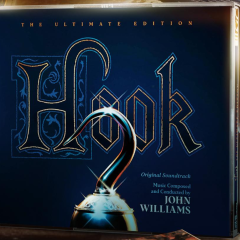
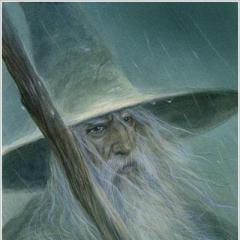
.thumb.png.6c03f89f2af98580d5533068d16d6501.png)


